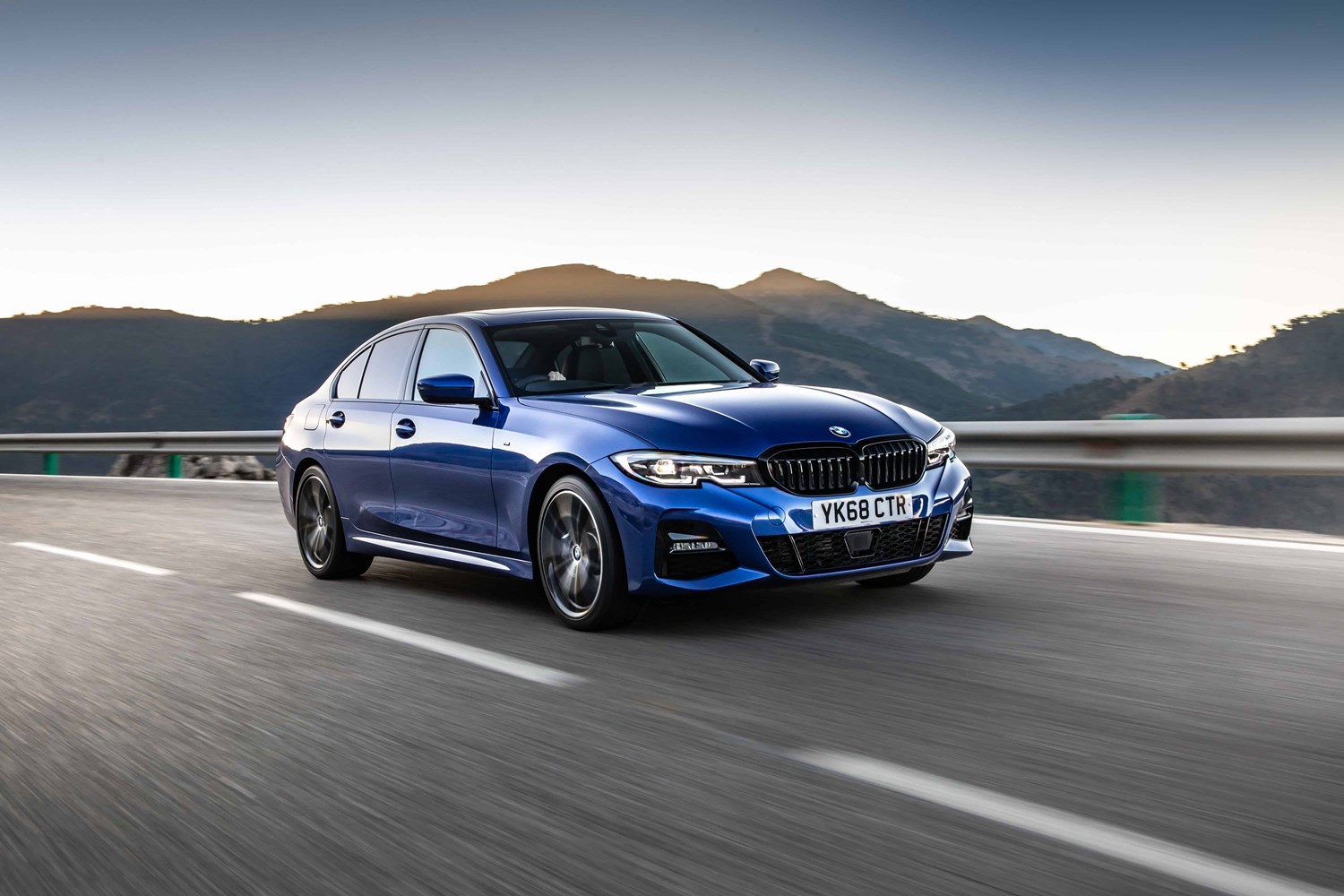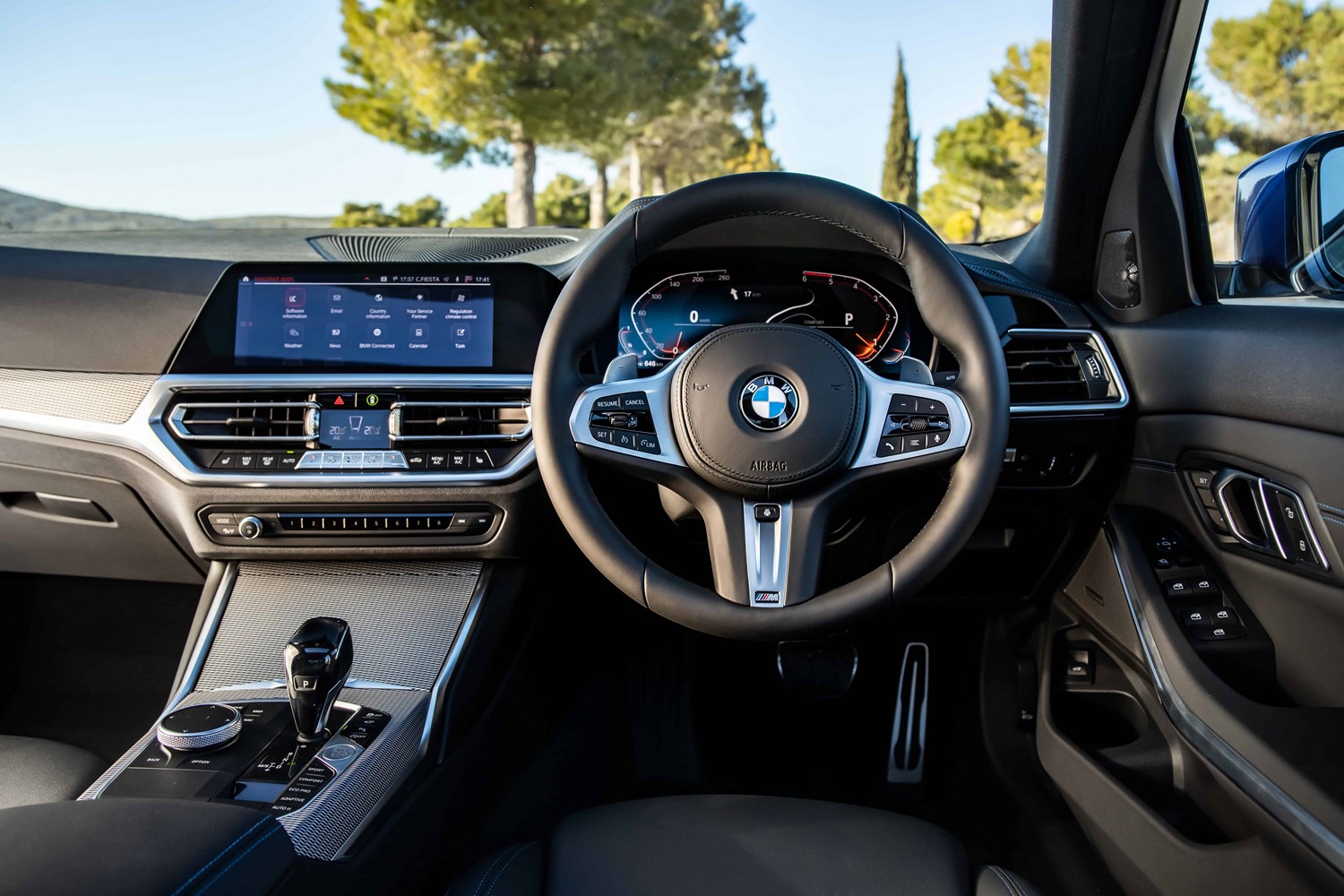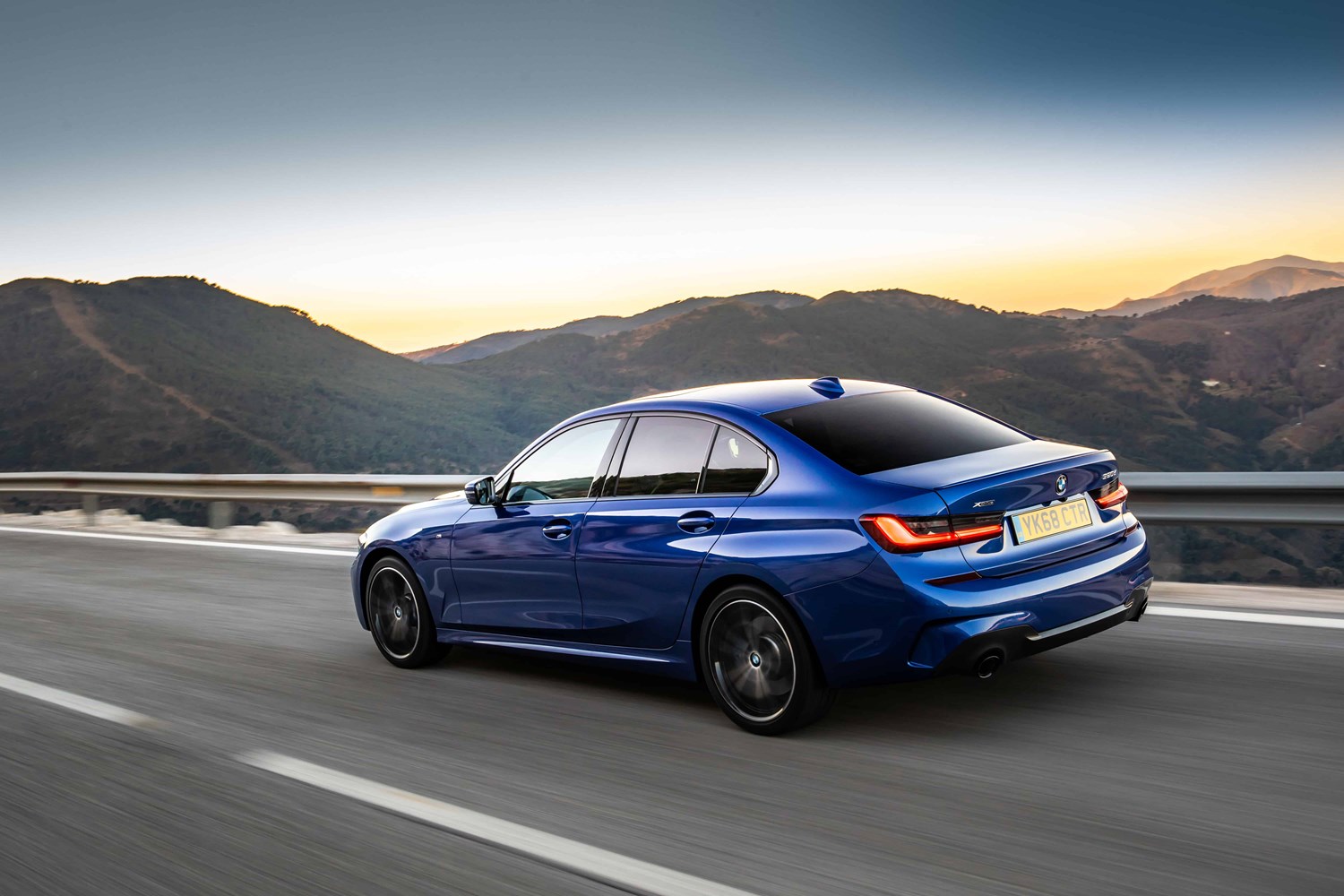What’s under the bonnet?
One of the 3 Series’ strongest selling points has been its range of punchy and driver orientated engines, and this latest version is no different. There’s a healthy mix of petrol and diesels as well as a plug-in hybrid too.
On the petrol front, the range begins with the 318i, which utilises a 154bhp 2.0-litre unit. If you fancy a bit more power, choose the 320i, which sees the power increased to 181bhp. You can have this with rear- or xDrive all-wheel-drive. The former is quickest, though, as it can accelerate from 0-60mph in 6.9 seconds.
Higher up the line-up, there is the 330i, which features a 254bhp 3.0-litre petrol engine that can accelerate to 60mph in 5.6 seconds. Right at the top of the line-up is the punchy M340i, which comes with a 369bhp 3.0-litre unit that can sprint from 0-60mph in a rapid 4.2 seconds.
On the diesel front, the line-up is equally extensive. The range starts with a 148bhp 2.0-litre turbodiesel badged 318d which is a capable unit, and the only 3 Series you can choose with a six-speed manual gearbox – every other version utilises an automatic transmission. But if you want a good all-rounder, then the 187bhp 320d is worth putting on your list, and it continues to prove popular.
Two more powerful diesels are available – the 330d and M340d. The latter produces 261bhp from its 3.0-litre engine, while the ‘M’-badged model delivers a superb mix of performance and efficiency. It produces 335bhp from its tuned 3.0-litre engine, and can reach 0-60mph in just 4.4 seconds.
There’s also the 330e plug-in hybrid, which mates the 320i engine together with an electric motor and battery pack to produce a combined 288bhp.
Running costs
While the 3 Series is a car that’s pleasing to drive, it’s also good on the wallet too, with a good spread of economical engines across the board. Even the M340i will return an average fuel economy of around 35mpg.
It’s also good news for private and company car drivers with low CO2 emissions. If you’ve got one eye on what your spending, then the 320d with mild hybrid technology will average around 57mpg and CO2 emissions between 127-134 g/km of CO2, if you go for the four-wheel drive xDrive version, then this damages those figures slightly.
If you want a bit more oomph, then the 261bhp 330d is the one to go for, with an average economy in the mid 40s and emissions between 133-138 g/km. If you prefer petrol, then the 318i is the most frugal with a fuel economy of around 42mpg and emissions between 149-154g/km of CO2.
The 330e plug-in hybrid can travel for around 41 miles on electric mode alone, that means it has extremely impressive CO2 emissions of just 37g/km and economy figures between 176 – 201mpg. You just need to plug in regularly to make the most of its efficiency.
Things to look out for
As with the previous version it’s covered by a three-year, unlimited mile warranty, but history proves that the 3 Series should be pretty reliable.
In terms of options, it’s worth checking whether higher powered versions have an optional adaptive suspension as the ride can be pretty firm without it. It has a solid reliability record, too, but it’s worth taking out an aftermarket warranty once the manufacturer’s one runs out, as its premium parts won’t be cheap.
Rivals
The BMW 3 Series’ main rivals include the Mercedes-Benz C-Class and Audi A4, as well as the Jaguar XE and Alfa Romeo Giulia.
Also, the 3 Series faces competition from range-topping large family offerings like the Ford Mondeo, Skoda Superb or Volkswagen Passat. They offer just as much in terms of equipment levels, and in some cases even more, but can’t match the driving manners or badge kudos.
Depreciation
Anyone looking for a BMW 3 Series will be pleased to hear that it’s renowned for holding its value well. Plus, with them being so popular, it also means that there are plenty of well-priced, high-spec, slightly older versions available too. Normally the higher-powered diesels hold onto their value the strongest.


